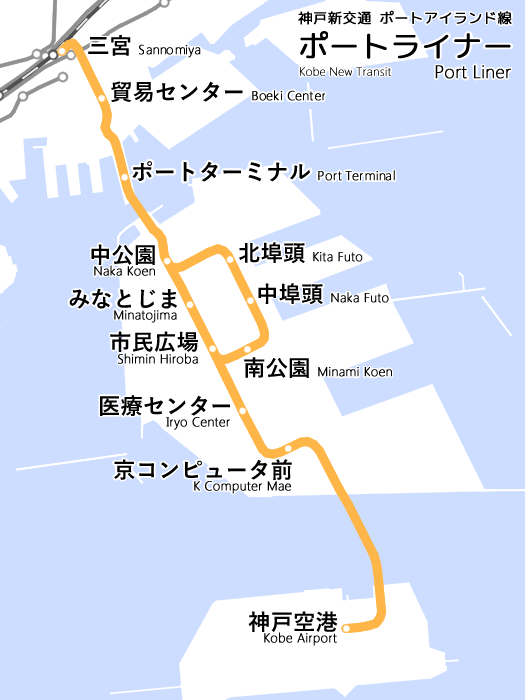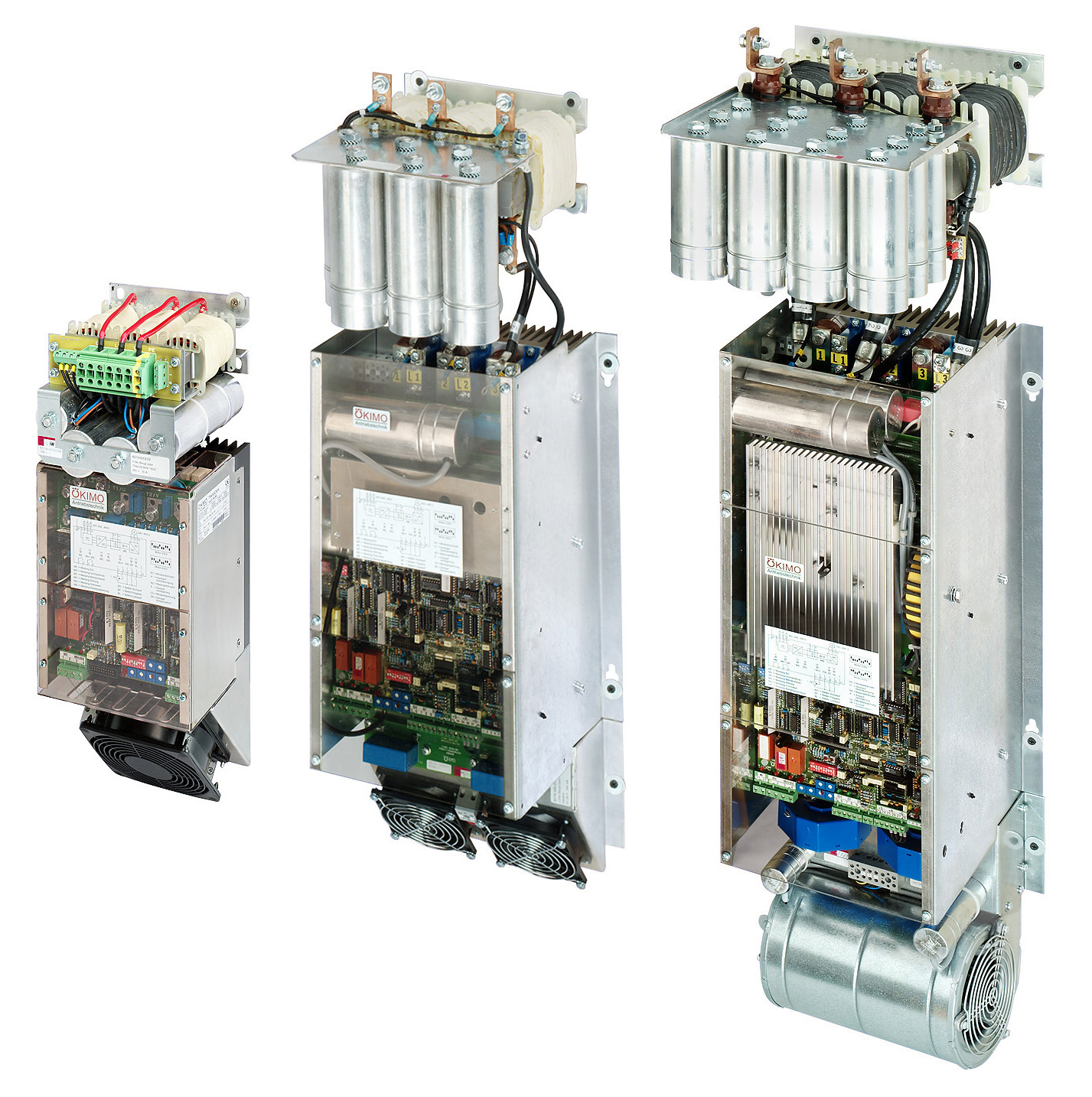|
Kobe New Transit 8000 Series
The {{Nihongo, Kobe New Transit 8000 series, 神戸新交通8000型 was an automated guideway transit (AGT) vehicle used for passenger service on the Port Island Line (Port Liner) of the Kobe New Transit. 8000 series was introduced on February 5, 1981 on the opening of the Port Island Line. The introduction of the Kobe New Transit 2000 series The is an automated guideway transit (AGT) vehicle used for passenger service on the Port Island Line (Port Liner) of the Kobe New Transit. The trains were introduced on February 2, 2006 to coincide with the extension of the Port Island Line t ... in 2006 led to the gradual displacement of the 8000 series trains, the last of which was withdrawn on November 8, 2009. Electric multiple units of Japan Kobe New Transit Railway services introduced in 1980 Kawasaki multiple units ... [...More Info...] [...Related Items...] OR: [Wikipedia] [Google] [Baidu] |
Kawasaki Heavy Industries
(or simply Kawasaki) is a Japanese Public company, public multinational corporation manufacturer of motorcycles, engines, Heavy equipment (construction), heavy equipment, aerospace and Military, defense equipment, rolling stock and ships, headquartered in Chūō-ku, Kobe, Chūō, Kobe and Minato, Tokyo, Minato, Tokyo, Japan. It is also active in the production of industrial robots, gas turbines, pumps, boilers and other industrial products. The company is named after its founder, Kawasaki Shōzō, Shōzō Kawasaki. KHI is known as one of the three major heavy industrial manufacturers of Japan, alongside Mitsubishi Heavy Industries and IHI Corporation, IHI. Prior to the World War II, Second World War, KHI was part of the Kobe Kawasaki ''zaibatsu'', which included JFE Holdings, Kawasaki Steel and K Line, Kawasaki Kisen. After the conflict, KHI became part of the DKB Group (''keiretsu''). History Kawasaki Shōzō, Shōzō Kawasaki, born in 1836, was involved with the marine indu ... [...More Info...] [...Related Items...] OR: [Wikipedia] [Google] [Baidu] |
Kobe New Transit
is the third-sector semipublic company that runs Port Island Line ("Port Liner") and Rokkō Island Line ("Rokkō Liner") automated guideway transit (AGT) systems in Kobe, Japan. When opened in 1981, the Port Liner was the world's first fully automated transport system. In the ''Surutto KANSAI'' stored-fare system, the company is represented by the mark KS on the back of farecards. Lines Kōbe New Transit operates following two lines, which connect the artificial islands in the port of Kobe with the mainland: *Port Island Line (Port Liner) *Rokkō Island Line (Rokko Liner) History *July 18, 1977: Company established *February 5, 1981: Port Island Line (Port Liner) began operation. The first practical AGT in Japan. *February 21, 1990: Rokkō Island Line (Rokkō Liner) began operation. *February 2, 2006: Port Liner extended to Kobe Airport. Rolling stock Current * 1000 series * 2000 series * 2020 series * 3000 series Former * 8000 series Fares The table below shows adult norma ... [...More Info...] [...Related Items...] OR: [Wikipedia] [Google] [Baidu] |
Port Island Line
The , commonly known as is an urban automated guideway transit (AGT) system in Kobe, Japan, operated by Kobe New Transit. Opened in 1981, the Port Liner was the world's first List of automated train systems, driverless urban transit system, a few years ahead of the Véhicule Automatique Léger, VAL system used on the Lille Metro, which opened in 1983. The initial system linked Sannomiya Station, Kobe's main transit hub, to the man-made Port Island, covering a distance of 6.4 km with 9 stations. On February 2, 2006, the line was extended by 4.3 km to the new Kobe Airport, built on an artificial island near Port Island. Route As the map indicates, the present system consists of one straight line, originating at Sannomiya Station and terminating at Kobe Airport Station, and a loop attached to the middle of the straight line. The stations on the former are numbered with prefix "P" and on the latter (except those shared with the former) are with prefix "PL". Originally, ... [...More Info...] [...Related Items...] OR: [Wikipedia] [Google] [Baidu] |
Thyristor Drive
Motor drive means a system that includes a motor. An adjustable speed motor drive means a system that includes a motor that has multiple operating speeds. A variable speed motor drive is a system that includes a motor and is continuously variable in speed. If the motor is generating electrical energy rather than using it – this could be called a generator drive but is often still referred to as a motor drive. A Variable Frequency Drive(VFD) or Variable Speed Drive(VSD) describes the electronic portion of the system that controls the speed of the motor. More generally, the term drive, describes equipment used to control the speed of machinery. Many industrial processes such as assembly lines must operate at different speeds for different products. Where process conditions demand adjustment of flow from a pump or fan, varying the speed of the drive may save energy compared with other techniques for flow control. Where speeds may be selected from several different pre-set ran ... [...More Info...] [...Related Items...] OR: [Wikipedia] [Google] [Baidu] |
Third Rail
A third rail, also known as a live rail, electric rail or conductor rail, is a method of providing electric power to a railway locomotive or train, through a semi-continuous rigid conductor placed alongside or between the rails of a railway track. It is used typically in a mass transit or rapid transit system, which has alignments in its own corridors, fully or almost fully segregated from the outside environment. Third rail systems are usually supplied from direct current electricity. Modern tram systems, street-running, avoid the risk of electrocution by the exposed electric rail by implementing a segmented ground-level power supply, where each segment is electrified only while covered by a vehicle which is using its power. The third-rail system of electrification is not related to the third rail used in dual gauge railways. Description Third-rail systems are a means of providing electric traction power to trains using an additional rail (called a "conductor rail") fo ... [...More Info...] [...Related Items...] OR: [Wikipedia] [Google] [Baidu] |
Automatic Train Control
Automatic train control (ATC) is a general class of train protection systems for railways that involves a speed control mechanism in response to external inputs. For example, a system could effect an emergency brake application if the driver does not react to a signal at danger. ATC systems tend to integrate various cab signalling technologies and they use more granular deceleration patterns in lieu of the rigid stops encountered with the older automatic train stop (ATS) technology. ATC can also be used with automatic train operation (ATO) and is usually considered to be the safety-critical part of a railway system. Over time, there have been many different safety systems labelled as "automatic train control". The first experimental apparatus was installed on the Henley branch line in January 1906 by the Great Western Railway, although it would now be referred to as an automatic warning system (AWS) because the driver retained full command of braking. The term is especially co ... [...More Info...] [...Related Items...] OR: [Wikipedia] [Google] [Baidu] |
Automated Guideway Transit
An automated guideway transit (AGT) or automated fixed-guideway transit or automatic guideway transit system is a type of fixed guideway transit infrastructure with a riding or suspension track that supports and physically guides one or more driverless vehicles along its length. The vehicles are often rubber tired or steel wheeled, but other traction systems including air cushion, suspended monorail and maglev have been implemented. The guideway provides both physical support, like a road, as well as the guidance. AGT covers a wide variety of systems, from limited people mover systems commonly found at airports, to more complex automated train systems like the Vancouver SkyTrain. In the people mover role the term "automated people mover" (APM) is sometimes used, although this distinction is relatively rare because most people movers are automated. Larger systems span a variety of conceptual designs, from subway-like advanced rapid transit (ART) systems to smaller (typically tw ... [...More Info...] [...Related Items...] OR: [Wikipedia] [Google] [Baidu] |
Kobe New Transit 2000 Series
The is an automated guideway transit (AGT) vehicle used for passenger service on the Port Island Line (Port Liner) of the Kobe New Transit. The trains were introduced on February 2, 2006 to coincide with the extension of the Port Island Line to the newly opened Kobe Airport. The series is a successor to the Kobe New Transit 8000 series, 8000 series trains that has run on Port Liner since the line's opening in 1981. Background Introduced on February 2, 2006, simultaneously with the extension of the Port Liner to Kobe Airport, the 2000 series is based on the Kawasaki Computer Control Vehicle (KCV) developed by Kawasaki Heavy Industries, the same company that manufactures the 8000 series rolling stock used for the Port Liner since service began. Therefore, it has guide wheels for floating switches installed on both sides of the cars. 2000 series and 8000 series are the only New Transit System rolling stock to handle this type. Since the last of the ageing 8000 series trains were ... [...More Info...] [...Related Items...] OR: [Wikipedia] [Google] [Baidu] |
Electric Multiple Units Of Japan
Electricity is the set of physical phenomena associated with the presence and motion of matter that has a property of electric charge. Electricity is related to magnetism, both being part of the phenomenon of electromagnetism, as described by Maxwell's equations. Various common phenomena are related to electricity, including lightning, static electricity, electric heating, electric discharges and many others. The presence of an electric charge, which can be either positive or negative, produces an electric field. The movement of electric charges is an electric current and produces a magnetic field. When a charge is placed in a location with a non-zero electric field, a force will act on it. The magnitude of this force is given by Coulomb's law. If the charge moves, the electric field would be doing work on the electric charge. Thus we can speak of electric potential at a certain point in space, which is equal to the work done by an external agent in carrying a unit of p ... [...More Info...] [...Related Items...] OR: [Wikipedia] [Google] [Baidu] |
Railway Services Introduced In 1980
Rail transport (also known as train transport) is a means of transport that transfers passengers and goods on wheeled vehicles running on rails, which are incorporated in tracks. In contrast to road transport, where the vehicles run on a prepared flat surface, rail vehicles (rolling stock) are directionally guided by the tracks on which they run. Tracks usually consist of steel rails, installed on sleepers (ties) set in ballast, on which the rolling stock, usually fitted with metal wheels, moves. Other variations are also possible, such as "slab track", in which the rails are fastened to a concrete foundation resting on a prepared subsurface. Rolling stock in a rail transport system generally encounters lower frictional resistance than rubber-tyred road vehicles, so passenger and freight cars (carriages and wagons) can be coupled into longer trains. The operation is carried out by a railway company, providing transport between train stations or freight customer faciliti ... [...More Info...] [...Related Items...] OR: [Wikipedia] [Google] [Baidu] |


.jpg)


